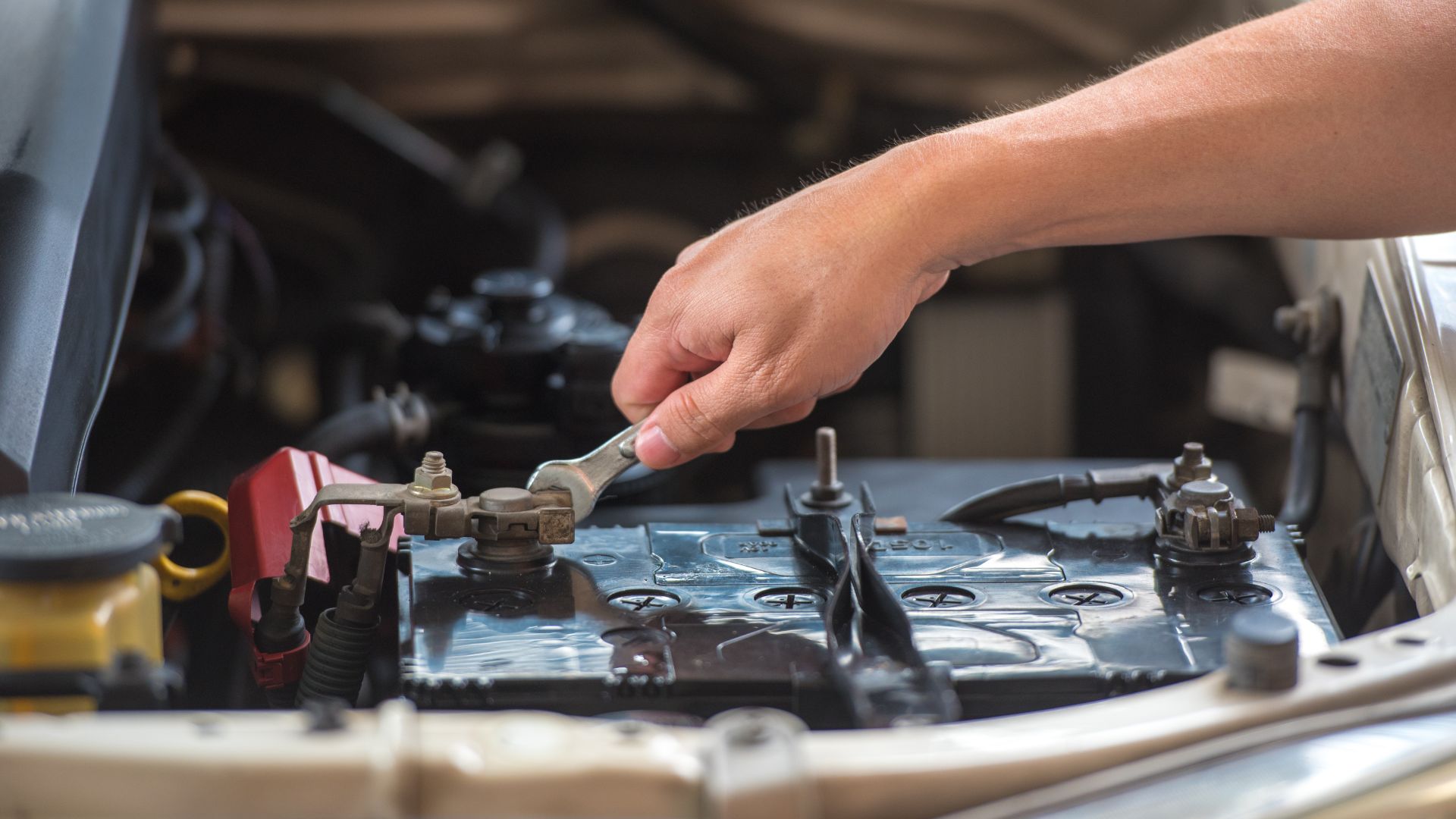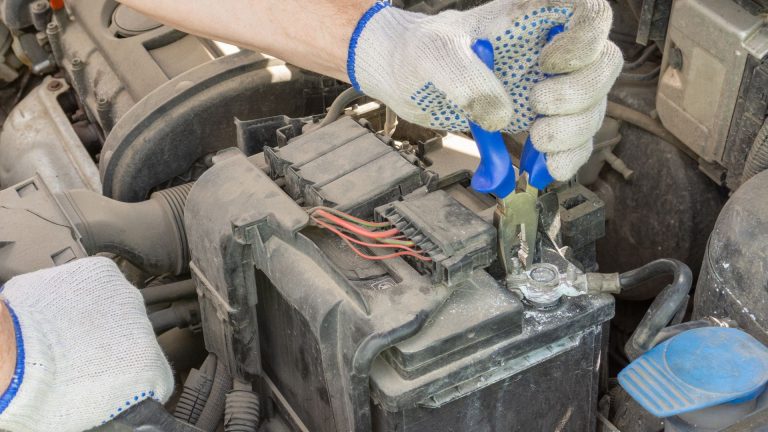When connecting a battery, which terminal comes first? — explained
Discover the correct order for connecting a battery terminal to avoid hazards.

There are several reasons you might want to remove your vehicle’s battery; it might be for charging or replacement. Whatever the reason, you must ensure you connect the right cables to the right terminal when fixing it.
Many car owners need clarification as to which cable should be connected or disconnected first. When removing your car battery for any reason, you should always install the positive terminal before the negative one. Conversely, when removing your vehicle’s battery, you would want to reverse the process, i.e., disconnecting the negative terminal before the positive terminal.
It is essential to follow these steps to avoid sparks that could damage your vehicle’s electrical system. Suppose you remove the positive terminal; first, you could create a big spark if the spanner or wrench you are using to loosen the battery touches a metal part of your vehicle.
This article provides detailed information on what terminal comes first when connecting your car’s battery to power terminals and answers related questions.
How does a car battery work?

Before delving into what comes first when connecting a battery, let’s first understand how a car battery works.
A vehicle’s battery consists of six cells, each with negative and positive plates, and each of these plates are separated by an electrolyte (water and sulphuric acid).
When you run the engine, the battery produces an electric current that flows through the positive and negative terminals. The battery now powers your car’s electrical system when you power the engine off. This happens when the battery releases the stored energy through the electrolytes to the battery plates.
Identifying battery cables
Your vehicle’s battery terminal should either be color-coded or marked. For marked terminals, you will see a minus symbol on the negative terminal and a positive symbol for the positive terminal.
Suppose the terminals are color-coded; the black indicates a negative, while the red cap shows you where the positive terminal is. Some cars utilize colors and symbols, making it easier to identify the terminals.
When disconnecting a car battery, which terminal comes first?

It would be best to always begin from the negative terminal when disconnecting a car battery. If you remove the positive terminal first, you will create a short circuit, risking sparks, especially if there is a metal contact in the area.
To disconnect the battery terminal, you will need a 10mm socket wrench which you’d fit on the bolt connector. To loosen the terminal, turn your socket wrench counterclockwise while ensuring that the socket never contacts both of the terminals simultaneously to avoid creating an electrical pathway.
It’s important to note that the sequence for disconnecting is in reverse. This is because, in this approach, you break the circuit when disconnecting the battery, thus preventing damage to the battery. It’s essential to also look for signs of car battery corrosion on terminals since it could make a problem with the battery connection.
What happens if you connect battery cables backward?
Fuses are safety features installed on your vehicle’s electrical system and are designed to keep your car from damage by breaking the circuit whenever there is an overload of current. When you connect your battery cables in the wrong order, the fuse will blow, thus preventing electrical current from flowing through the circuit. This protects your vehicle’s electrical from damage.
Why should you disconnect the negative terminal first?
If you fail to remove the negative terminal, you will risk an electric shock. Suppose you were to remove the positive terminal first, leaving the negative terminal still connected. In that case, if you mistakenly dropped a metal device on the positive terminal, and it also contacts a metal part of your vehicle simultaneously, you’d be creating an electrical circuit.
This will shorten your battery and could give you a severe shock. That’s why you should detach the negative terminal first and connect it last.
However, you must prevent these connectors from touching each other or anything metal while you’re disconnecting them. Most people cover them with a plastic zip tie or any other insulator to prevent them from contacting each other or the vehicle’s metal parts.
Why should you connect the positive terminal first?
When connecting car battery cables, you should ensure you connect the positive terminal first. This is essential because if you mistakenly touch the vehicle’s body with your wrench or spanner, the positive cable will not arc due to the absence of a negative cable.
Connecting the negative terminal first could lead to dangerous outcomes while attaching and tightening up the positive terminal. This is because, suppose you install the negative terminal first before connecting the positive terminal. In that case, if your wrench or spanner mistakenly touches the body of the vehicle while installing the positive cable, it will arc through you and might lead to a fire outbreak in extreme cases.
What happens if you put battery cables on the wrong sides?
For some, it might not be a matter of order; some people connect the cables to the wrong sides. Not recognizing which terminal is positive or negative is rare; however, some people still make mistakes. Below, we discuss the possible damages to your vehicle if you ever try installing the battery cables on the wrong terminals.
Battery damage
Attaching the battery cables to the wrong terminal creates an electrical surge that can quickly damage your car battery.
Blown fuses
Car manufacturers install fuses as protection devices between your vehicle’s electrical system and the battery. Misconnecting your battery cables will often blow one or more fuses, causing the circuit to function incorrectly until you replace the blown fuse.
Fried electrical components
In an ideal situation, your vehicle’s fuses would protect all your sensitive electronics from the electrical surge created by the battery cables. However, since we aren’t in a perfect world, the electrical components (i.e., modules, wiring, etc.) and your alternator can become damaged when you swap the cables.
Personal injury
Batteries release flammable hydrogen gas, and reversing the cables creates a spark that could combust the gas, leading to an explosion.
Which terminal should you connect to first when jumpstarting a car?
When jumpstarting your vehicle, you should connect the live battery’s positive terminal to the dead one’s positive terminal. After that, you could connect the live battery’s negative terminal to the grounding point on the vehicle, like the chassis. This completes the circuit, allowing electrical current to flow from the live battery to the dead battery. If you are trying to jumpstart a car with a bad alternator, it’s essential to know about the jumper cable disconnection order.
Which jumper cable should you disconnect first?
It would be best to disconnect the negative jumper cable first after jumpstarting your car, and it is the reverse order of connecting the cables. Therefore, after jumping your dead battery, carefully disconnect the black clamp from the metal surface (engine block or frame), followed by the black clamp attached to the dead battery’s negative terminal.
After that, disconnect the red clamp from the live battery or the jump starter, then remove the other end from the dead battery’s terminal.
What could damage your car battery?
Connecting your battery to the terminal in the wrong order is one of many things that could damage your vehicle’s battery. Extreme temperatures, overcharging, and deep discharge can also affect your car battery.
Extreme temperatures damage your battery by causing its electrolytes to boil or freeze. In hot weather, it is essential to keep your batter cool. Conversely, in cold weather, you should keep your battery warm (but not too hot). Overcharging happens when the charging voltage exceeds 14 volts, caused by a faulty alternator or voltage regulator.
Deep charging happens when your battery has been discharged below 12 volts. This can result from leaving your vehicle idle for a long time or your electrical system having a lot of loads.
Our take
Sometimes you need to connect your battery to your vehicle, perhaps after a charge or when installing a new battery. When carrying out this task, it is crucial first to connect the positive terminal before the negative terminal. Conversely, when disconnecting the battery for either charging or replacement, always disconnect the negative terminal first.
If you carry out any of these tasks, you must connect and disconnect the terminals correctly. Failure to do this could lead to a spark that might damage your vehicle’s electrical system.
Do you connect red or black first?
Connect the red (positive) terminal first, preventing sparks that could happen if you connect the negative terminal first.
What happens if you connect the negative terminal first?
Connecting the negative terminal before the positive terminal can cause a big spark through you when the wrench or spanner you’re using to tighten the battery cables get in contact with a metal surface like the chassis.
Why do you connect the positive terminal first?
It is crucial always to connect the positive terminal first to avoid getting a nasty shock. This would risk a spark if you connect the negative terminal first and your spanner or wrench mistakenly touches a metal part of your car.